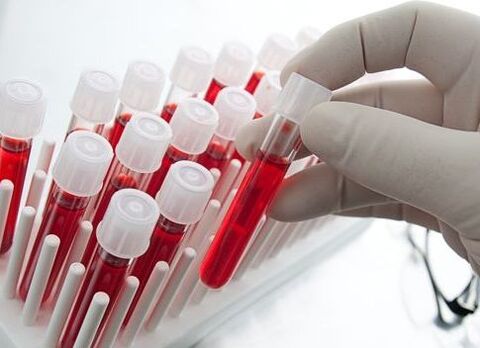Your joint is painful, swollen or difficult to move. What to do? Which doctor should I consult with this problem? What is the difference between arthritis and arthrosis? Everything in our body works, works, and wears out accordingly. Healthy cells heal themselves, but if this does not happen, then the cause must be sought and treated.
Attention! Do not self-medicate, you can eliminate the symptoms, but the cause remains!
In small towns and villages, first of all, if the child has problems, they go to a family doctor - to a pediatrician, and he or she determines which narrow specialist to turn to.
If you have been diagnosed with arthritis, don't confuse it with arthritis. What is the difference between arthritis and arthrosis? Now we will understand how these diseases differ.
What is the difference between arthritis and arthrosis?
The first difference in etiology:
- Arthritis can occur due to injury or infection, malfunction of the metabolic system, and is characterized by an inflammatory process.
- Osteoarthritis - chronic, with it the joints wear out and deform.
The symptoms of the diseases are also different - this is the second sign:
- Arthritis - can occur in a latent form (chronic) or immediately felt (acute form). It is manifested by pain, fever, swelling, and changes in the color of the skin.
- Arthrosis is not necessarily accompanied by painful symptoms. Sometimes the pain appears after a long rest, but it disappears after development, it crunches and clicks when moving.
Arthrosis affects people over 50, athletes or the consequences of a serious fracture - after 40 years.
The third is the nature of the damage to the body:
- Arthritis affects the whole body. The inflammatory process affects the functioning of internal organs: the heart, liver, kidneys.
- Arthrosis - affects only the joint.
Fourth - exactly how the joints are damaged:
- Any joint can be affected by arthritis.
- Arthrosis preferentially affects the connective tissues, which are most affected by the load. These are the knee, ankle, hip and big toe joints.
In addition, scientific studies have shown that on Earth, patients with arthritis make up 2% of the population, and those with arthrosis - 10%.
What is the diagnosis based on?

General blood test - blood from a finger. If arthrosis does not usually change the composition of the blood, the content of leukocytes and erythrocytes increases in case of arthritis.
Rheumatic tests and biochemical analyzes are carried out - it is taken intravenously on an empty stomach.
Arthrosis does not change the structure of the blood, in the case of arthritis, markers of inflammation increase.
Rheumatoid arthritis manifests itself in the appearance of rheumatoid factor in the blood, and in the case of gout - increased uric acid.
X-ray - shows the stage of the disease if the bone structure changes - arthrosis. MRI and CT examinations can also be ordered.
Which doctor treats arthritis and arthrosis?

As mentioned before, we first visit a family doctor. He examines and refers to a rheumatologist, examines, diagnoses, and plans treatment.
What is the difference between arthritis and arthrosis? If the doctor has diagnosed arthrosis, he prescribes further tests to determine the stage of the disease.
The treatment is done only with medicines, injections and ointments. First of all, the doctor advises to reduce the load and take chondroprotectors. A series of exercises are recommended to improve blood circulation.
The treatment must be complex, so doctors with the following narrow specialties can be involved: physiotherapist, massage therapist, physiotherapist, surgeon.
In case of connective tissue diseases, they can be sent to a sanatorium for further treatment and recovery.
An arthrologist is a doctor who deals with joint problems. However, these specialists can only be found in large clinics and it is difficult to reach them.
If the disease progresses and has entered a difficult stage, consult an orthopedic surgeon. Depending on the need for treatment, he can perform two types of surgery: organ preservation and endoprosthesis.
For the best treatment, specialists from different fields participate in each stage, but the therapist or rheumatologist supervises the entire treatment.
Which doctor treats arthritis depends on the cause.
- With an injury that gives you momentum, you need to visit a traumatologist for development.
- Rheumatoid - immune disease specialists.
- Metabolic disorders (gout) - nutritionist, endocrinologist, rheumatologist.
- Problems with the maxillofacial joint: dentist, otolaryngology.
- In case of suppuration - surgery requires the intervention of a surgeon.
The doctor carries out the treatment in several directions: stopping further destruction and restoring the capacity of the connective tissues.
Treatment should be started as soon as you feel discomfort. Thus, you will quickly feel relief, and the disease will cause minimal damage to the body.
Treatment regimen
In each case, the doctor carries out the treatment depending on the cause of arthritis, but there is a standard scheme:
- Non-steroidal anti-inflammatory drugs (NSAIDs). First, intramuscular, intravenous or intra-articular injections are made, ointments can be used for later treatment.
- Antispasmodics (for muscle spasms).
- Antidepressants.
- Anesthetics.
- Gastroprotectors to protect the stomach.
- A vitamin complex is prescribed.
- Chondroprotectors - improve the quality of cartilage tissue.
- Therapeutic diet.
- Physiotherapy.
- Massage, acupuncture.
This treatment regimen is supplemented depending on the course of the disease. The recovery process is long and arduous, and rehabilitation also requires a lot of work on your part.



















